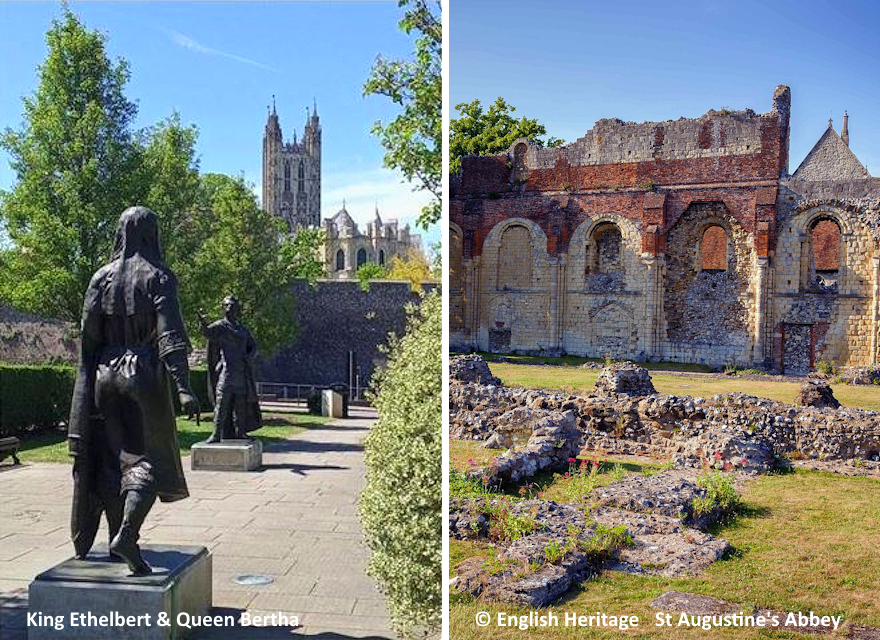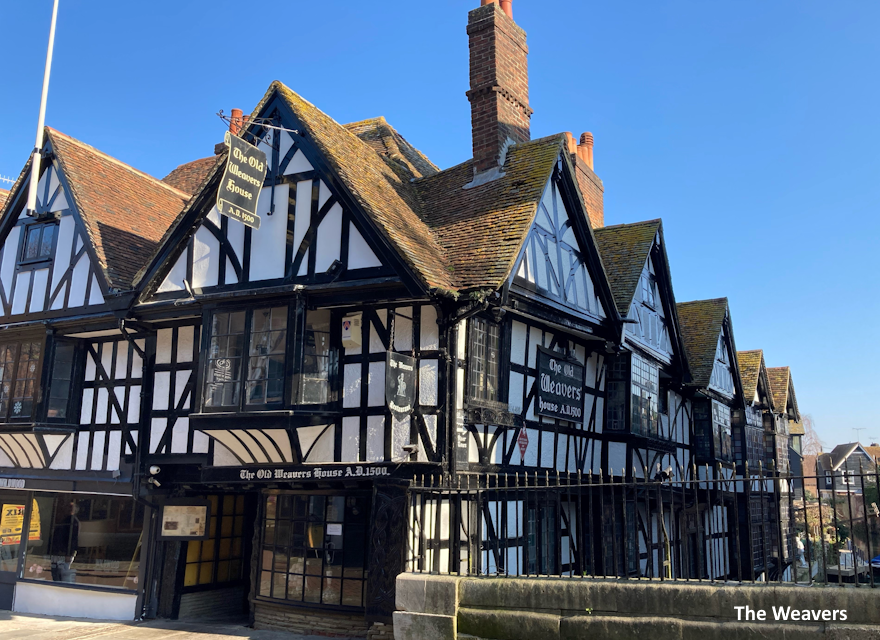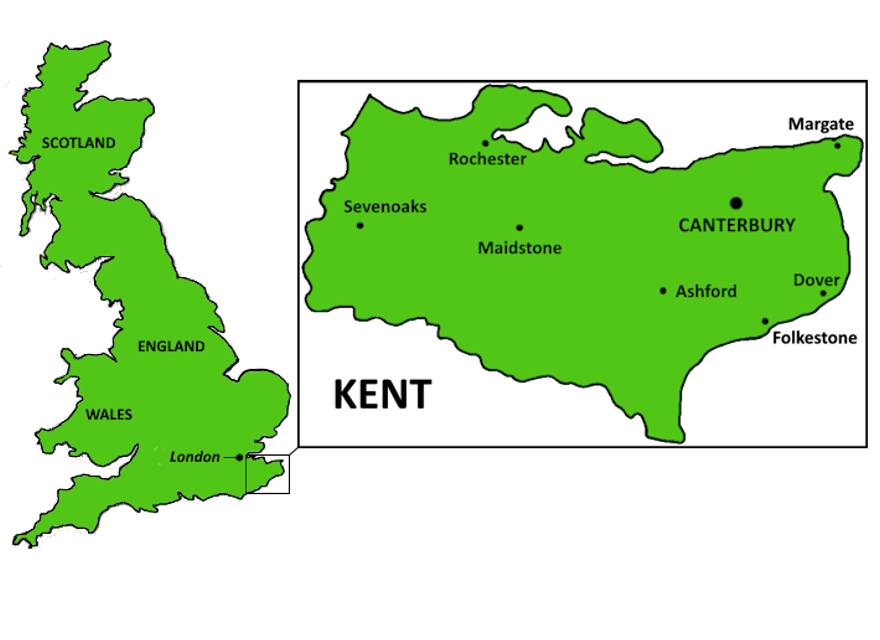Canterbury is a beautiful and very historic walled city with a 3-part UNESCO World Heritage Site nestled amongst narrow cobbled lanes and timber-framed buildings, a modern shopping centre with bustling pavement cafes, and peaceful river gardens.
Canterbury’s History
The River Stour runs through the city centre, and it is this that attracted the first settlers in pre-Roman times. Today, river boats and punting trips can be enjoyed from the city centre or Westgate.
The Romans
After the Roman Conquest of Britain started in AD 43, the walled town of Durovernum Cantiacorum was built where the city of Canterbury stands today. Many Roman remains, including a stunning pavement mosaic can be viewed in the Roman Museum.
Birth of Christianity
After the Romans withdrew, the city became the capital of the pagan Saxon kingdom of Kent, Cant-wara-byrig (Canterbury). In AD 597, St Augustine, a missionary sent by Pope Gregory, arrived and was welcomed by King Ethelbert, and his Christian wife, Queen Bertha.

Ethelbert was baptised by St Augustine in St Martin’s Church, and English Christianity was born. The remains of St Augustine’s Abbey can be visited. St Augustine founded Canterbury Cathedral, Mother Church of the worldwide Anglican Communion and seat of the Archbishop of Canterbury.
Infamous Murder
The city has experienced turbulent times, from the invasion by the Danes in 1011 and the Cathedral being destroyed by fire in 1067 (rebuilt by Archbishop Lanfranc in 1077). Perhaps the most notable date however is 1170 when, following a dispute between King Henry II and Archbishop Thomas Becket, 4 knights murdered Becket inside the Cathedral. Though a terrible tragedy for the Church, it led to the city enjoying centuries of prosperity as pilgrims travelled from all over Europe to visit Becket’s shrine. The city expanded as pilgrim inns were built in the city, many of which still stand. The poet, Geoffrey Chaucer, wrote his most famous work, The Canterbury Tales, based on pilgrims travelling to the shrine.
A Walled City
The city walls were rebuilt during the medieval period, with 6 main gates, including the Westgate, built in 1380, now the only surviving gate (and today a museum), the others having been pulled down in the 18th century. Half of the city walls remain, along with a number of watch towers. You can stroll along them, climb the Dane John Mound, and view the Norman Castle.
The Weavers
In the late 16th century, Walloon and Huguenot refugees were granted permission by Elizabeth I to settle in Canterbury after fleeing religious persecution in France and Netherlands.

They were skilled weavers, giving rise to an industry across the city which created employment and wealth. Half-timbered buildings with large upstairs windows to let in natural light still stand, one of the most famous being The Weavers on the King’s Bridge in the High Street.
WWII
During the second World War, Canterbury suffered a number of raids, most notably the Baedeker Raids of June 1942. Much of the eastern end of the city was heavily bombed, but the Cathedral was largely unscathed.
Where is Canterbury?
Canterbury is located in east Kent, in the south-eastern corner of England. It is served by 2 rail stations (Canterbury East and West), with links to the coastal towns of Margate, Ramsgate and Broadstairs to the east, and high speed services into London.
The bus station offers services across the county plus a National Express coach into London, and there are good road links via the A2 and A28. The Port of Dover is 30 minutes away by road.

Our Tours
Our expert guides are fully qualified and passionate about Canterbury. They will share their knowledge of the city's past, interwoven with the stories of Archbishops, Kings, pilgrims, Becket, Chaucer and Marlowe amongst others, whilst exploring the fascinating buildings and architecture of this historic city.
Discover all this and more on our Daily Tours, or book a Private Tour for your family or group.